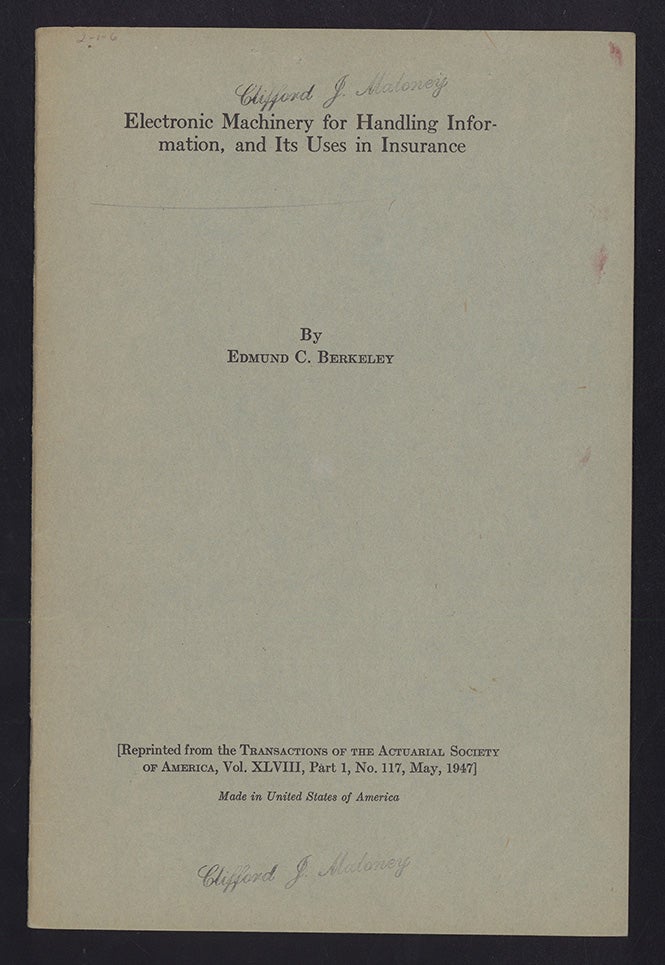
Electronic machinery for handling information, and its uses in insurance. Offprint
Publisher Information: 1947.
Berkeley, Edmund C. (1909-88). Electronic machinery for handling information, and its uses in insurance. Offprint from Transactions of the Actuarial Society of America 48 (1947). 36-52pp. 228 x 153 mm. Original printed wrappers, a few tiny spots, almost invisible staple-holes in front wrapper. Very good copy. Former owner’s name-stamp (Clifford J. Maloney) on wrappers.
First Edition, Offprint Issue. The first published paper on the commercial application of electronic / electromechanical computing in private industry (outside of the telephone company). Drawing on material that he would later publish in his famous Giant Brains or Machines that Think (1949), Berkeley described the four large-scale computing machines then in operation—MIT’s Differential Analyzer; Harvard’s Automatic Sequence Controlled Calculator; the Moore School’s ENIAC; and Bell Laboratories’ Relay Calculator—and discussed the machines’ information-processing capabilities and their potential uses in the insurance industry. “It is natural to call these machines mechanical or electronic brains and to speak of them as machinery that thinks. This new machinery is certain to have far-reaching effects in all fields where the handling of information is the bulk of the work. . . . Much of the material in this paper is taken from a forthcoming book on the subject by the present writer, and is used by special permission of the publisher” (p. 36).
Berkeley, a seminal figure in the history of modern computing, was introduced to computing (using punched-card machine methods) while working as an actuary at Prudential Insurance. In 1942 he joined the Navy and was assigned to the Harvard Computation Laboratory, where he worked with Howard Aiken on the Harvard Mark II. In 1946 Berkeley returned to Prudential where he helped create a prototype premium billing trial for the Harvard Mark I and participated in studies that led to Prudential’s purchase of one of the first UNIVAC I computers. He also began working on Giant Brains and in 1947 founded the Association for Computing Machinery. In 1948 he left Prudential to found his own company, and in 1951 he began editing and publishing Computers and Automation (later renamed Computers and People), the first periodical specifically devoted to computing. He also headed his own publishing firm, consulted for industry, and invented and sold several build-it-yourself electronic computers and small robots (Simon, Squee, Tyniac, Brainiac, etc.) as educational tools. In his later years he became known as the conscience of the computer industry through his often-expressed belief that computers should be used not for military or destructive purposes, but only for the benefit of society.
Book Id: 43248Price: $1,500.00
